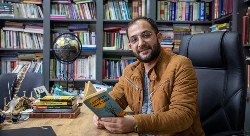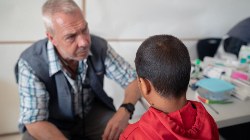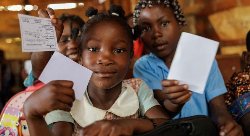Experience the Science of Aboriginal Culture
Experience the Science of Aboriginal Culture
A free Family Science Fun Day at Redfern
Community Centre on 11 August will reveal how science has
been used by the world’s oldest living
culture.
Visitors will see how Aboriginal practices
are helping regenerate the land and improving wildlife
habitats in northern NSW, while children can create slime,
make a stone axe and enjoy loads of other hands-on
activities.
Lord Mayor Clover Moore said the free
community day was being held as part of Macquarie
University’s four-day Indigenous Science
Experience.
“This is a rare chance to learn from
Aboriginal elders and scientists from as far away as Arnhem
Land,” the Lord Mayor said.
“It’s also a
chance to promote their contribution to scientific research,
land management and science education.”
Fun
activities include basket weaving, insect and microbeast
handling, microscopes and chemistry, as well as mini water
courses controlled by pumps and pulleys.
Macquarie
University Research Officer, Dave Harrington, from the
National Indigenous Science Education Program, said
Aboriginal and Torres Strait Islander practices contributed
to a better understanding of science.
“Science
often gets dressed up as a something that is purely
intellectual, but it’s actually really hands-on,” Mr
Harrington said.
“By looking at how Aboriginal
peoples use navigation, fire and earth as tools, we gain a
better appreciation of how important science is to our
day-to-day lives.”
Contributing to the displays
and activities will be Birds Australia with their popular
‘eagle cam’, Firesticks, National Parks and Wildlife,
Yugul Mangi rangers from southeast Arnhem Land, the
Australian Tropical Herbarium from Cairns, students from the
Silkwood Independent School on the Gold Coast, and Sydney
Olympic Park.
Oliver Costello is a Bundjalung man
and the coordinator of Firesticks, a partnered project that
works with Aboriginal landowners in northern NSW to improve
landscapes using cultural practices and
knowledge.
“Traditionally, Aboriginal people
relied on fire for many reasons, including maintaining
resources and creating pathways, so it plays a very
important role in our culture,” Mr Costello
said.
“All plants and animals have some kind of
relationship with fire – they either like it or they
don't. For example, fire will often kill rainforest areas,
but some bushland, such as coastal heath, need fire to
regenerate, because as some plant species age, they die-off
and other species come in and take
over.
“Appropriate fire regimes protect
ecosystems, so a part of our project is acknowledging and
re-establishing culturally appropriate regimes.
Unfortunately, in many areas those practices have declined
or ceased because of land use change, access to land and
displacement.
"We want to reinvigorate Indigenous
cultural practices and knowledge so that Aboriginal
landowners are acknowledged and supported to manage their
country with their own cultural values and practices.”
ENDS


 UN News: Healing Page By Page In Earthquake-affected Türkiye
UN News: Healing Page By Page In Earthquake-affected Türkiye Save The Children: Rate Of Attacks On Healthcare in Gaza Higher Than In Any Other Conflict Since 2018
Save The Children: Rate Of Attacks On Healthcare in Gaza Higher Than In Any Other Conflict Since 2018 UN News: Green Light For New Cholera Vaccine, Ukraine Attacks Condemned, Action Against Racism
UN News: Green Light For New Cholera Vaccine, Ukraine Attacks Condemned, Action Against Racism Laureus: Grand Slam Champion Garbiñe Muguruza Announces Retirement Ahead Of Laureus World Sports Awards
Laureus: Grand Slam Champion Garbiñe Muguruza Announces Retirement Ahead Of Laureus World Sports Awards Carbon Market Watch: Going For Green - Is The Paris Olympics Winning The Race Against The Climate Clock?
Carbon Market Watch: Going For Green - Is The Paris Olympics Winning The Race Against The Climate Clock? New Zealand Defence Force: NZDF Working With Pacific Neighbours To Support Solomon Islands Election
New Zealand Defence Force: NZDF Working With Pacific Neighbours To Support Solomon Islands Election